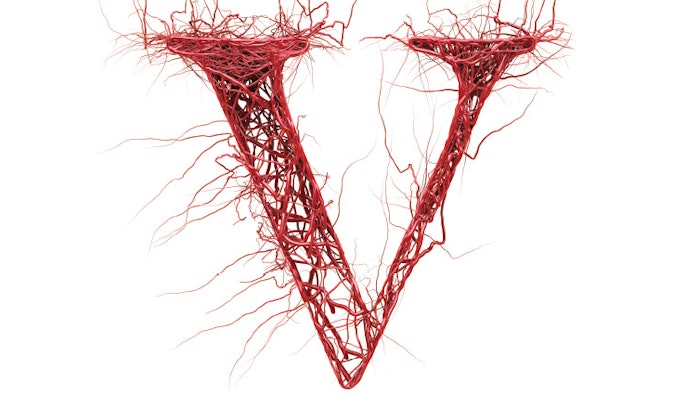
The assessment of the skin entails several key factors serving as indicators to the functional physiology and health of the skin. Although a general inclination during the skin assessment is to focus on terms of targeting results for the treatment, there are several factors indicative for cautionary measures that should not be overlooked. The increase in inflammatory skin conditions, allergic reactions to medications, active topicals, and vascular-mediated skin diseases enhances the potential for a heightened skin sensitivity. Multiple clinical and subclinical indicators help us determine the pathway for treatment in addition to the selection of modalities, and products. Less prominent, yet important assessment considerations involve skin temperature, edema, erythema, lymphatics and capillary status. The extent of these presentations give insight into possible connections to vascular-mediated skin diseases such as vascular malformations, insufficiency and vascular tumors.
The Vascular System of the Skin
The skins vascular system is an integral network positioned within the dermis along with blood vessels and lymphatic structures that play a key role in skin function, including the steady supply of oxygenated blood and nutrients. The arterial network leading to the face originates from the carotid arteries of the neck with main contributing arteries to the face including the facial transverse facial and the infraorbital arteries connecting respectively. The blood supply originates from an extensive network of larger blood vessels and capillaries that extend from regional branches of the systemic circulation to local sites throughout subcutaneous tissue and the dermis. An extensive lymphatic framework runs alongside many of the skin’s blood vessels, particularly those attached to the venous end of the capillary networks. The arteries and lymphatic system are imperative to maintain tissue stasis and provide important support for healing and drainage.1,2
Vascular Patterns of Blood Flow
Most of the blood flow in the skin is directed towards the more metabolically active components of the epidermis, follicular structures, the hair and the nails. As the epidermis does not contain blood vessels, cells are nourished by diffusion from blood capillaries that are present in the papillary dermis. Diffusion provides nourishment and waste removal from the cells of the dermis, as well as the cells of the epidermis. The skin’s tissues and their vessels form flat layers of horizontal, interconnected vascular networks supplying the fascia, subcutaneous tissue and the skin.
Related: An Esthetician’s Guide to Vascular Lesions
Anatomical Positioning of Blood Flow
Fascial Plexus. The fascial plexus is the deepest section located at the lower muscle fascia and is fed by Musculo- and septocutaneous vessels.
Subcutaneous Plexus. The subcutaneous plexus lies in the SMAS (Superficial Musculoaponeurotic System). The subcutaneous vessels in this area exit at the superficial fascia and divide into the subcutaneous fat into both superficial and deep layers. It is formed by both the musculocutaneous and septocutaneous arteries.
Subdermal Plexus. The subdermal plexus is the main blood supply to the skin. It runs like a flat conveyer of interconnecting vessels in a plane at the junction of the reticular dermis and the subcutaneous fat. The subdermal vessels account for the dermal bleeding when skin is cut or injured.
Dermal Plexus. The dermal plexus provides thermoregulation. The intradermal plexus itself is not sufficient to provide to full support tissue viability. The subepidermal plexus capillary bed supplies nutrients to the skin and the subepidermal vessels are located at the papillary ridge.3
Continue reading about the vascular system in our November Digital Magazine...
Disclaimer:The information in this article is presented for educational information only and should not be construed as medical advice. For the diagnosis of any health concern please consult your physician.
Erin Madigan-Fleck, NMD, CDT, LMC, LEI, has more than 35 years of experience in the aesthetic and natural health industry. She is a naturopathic medical physician with a private practice, Naturophoria, in Atlanta. She is a member of the American Society for Nutrition and serves on the Education Commission for the International Association for Applied Corneotherapy. She the owner and founder of DermaEducationTV Post Graduate Esthetic Training and the Scientific Esthetics Symposium.











